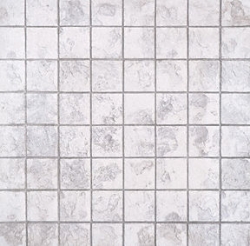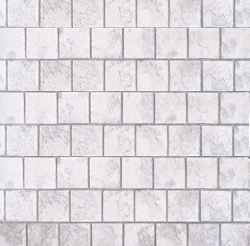Stacked Tile or Overlapping Tile?
Let’s define what the two terms mean, and give some advantages and disadvantages for both:
Stacked Tile

You’re familiar with stacked tile, and it’s the most common tile configuration for showers and bathtubs. Stacked tile forms a grid-like pattern.
- Easiest tile design because you never have to guess about the placement of the next row.
- Too many stacked tiles (especially with wide grout lines) can look imposing and grid-like.
- When wet, if a tile on the bottom row is loose and slippery, the column of tiles above it will force that tile downward.
Choosing between stacked tile and overlapping tile, the beginning tile-setter may choose stacked–it’s a bit easier to execute.
Overlapping Tile

With overlapping tile, there are no “crosses” formed.
- Take a little more work to install overlapping tile because you have to rely on your eye to determine the halfway point for your next row of tile.
- Reputed to be a bit more structurally sound, much like brick is laid in a staggered fashion.
- When wet, overlapping tile will not have problem mentioned with stacked tile of a column forcing the bottom tile downward.
- Can break up that grid-like imposing look.